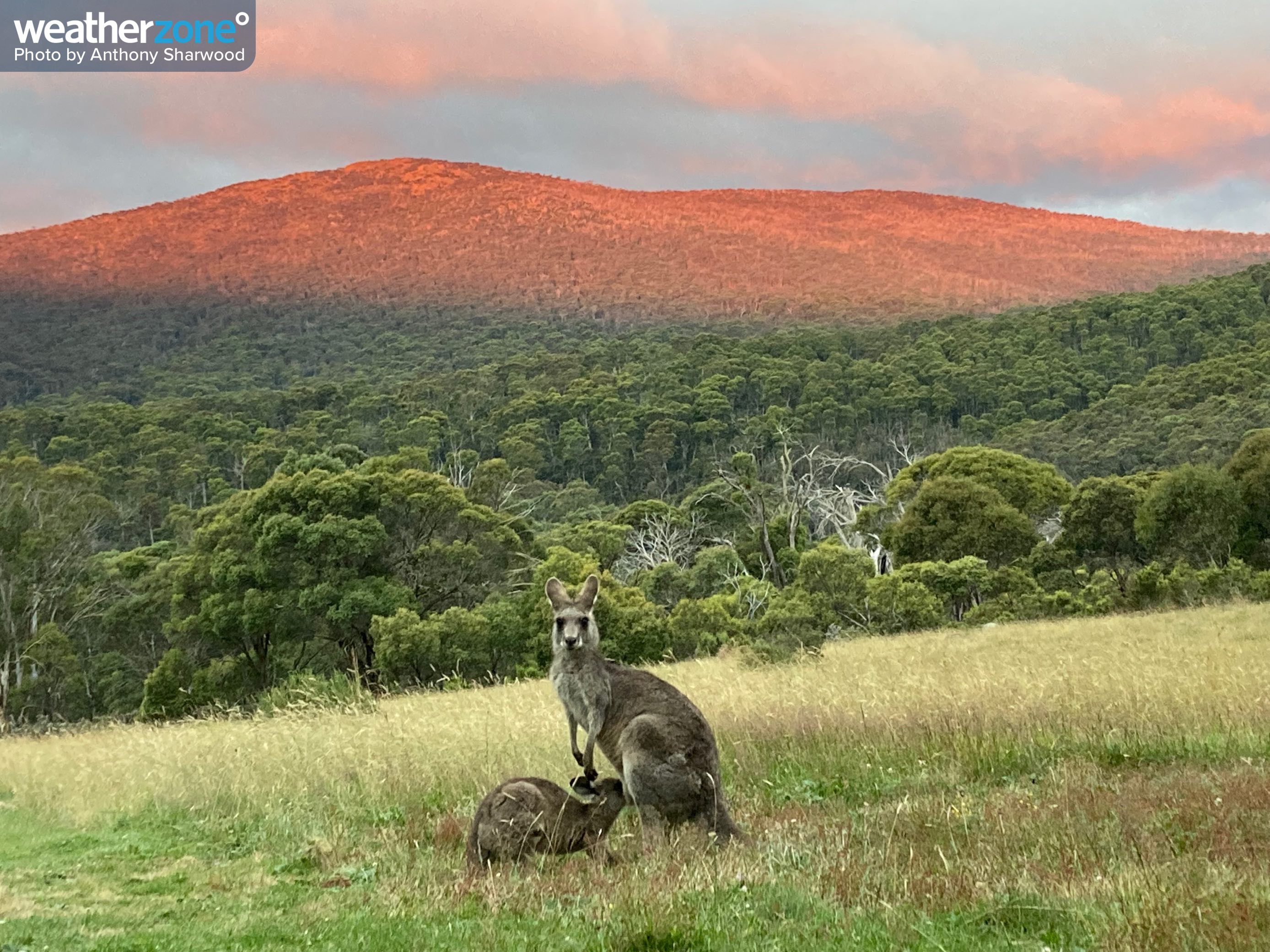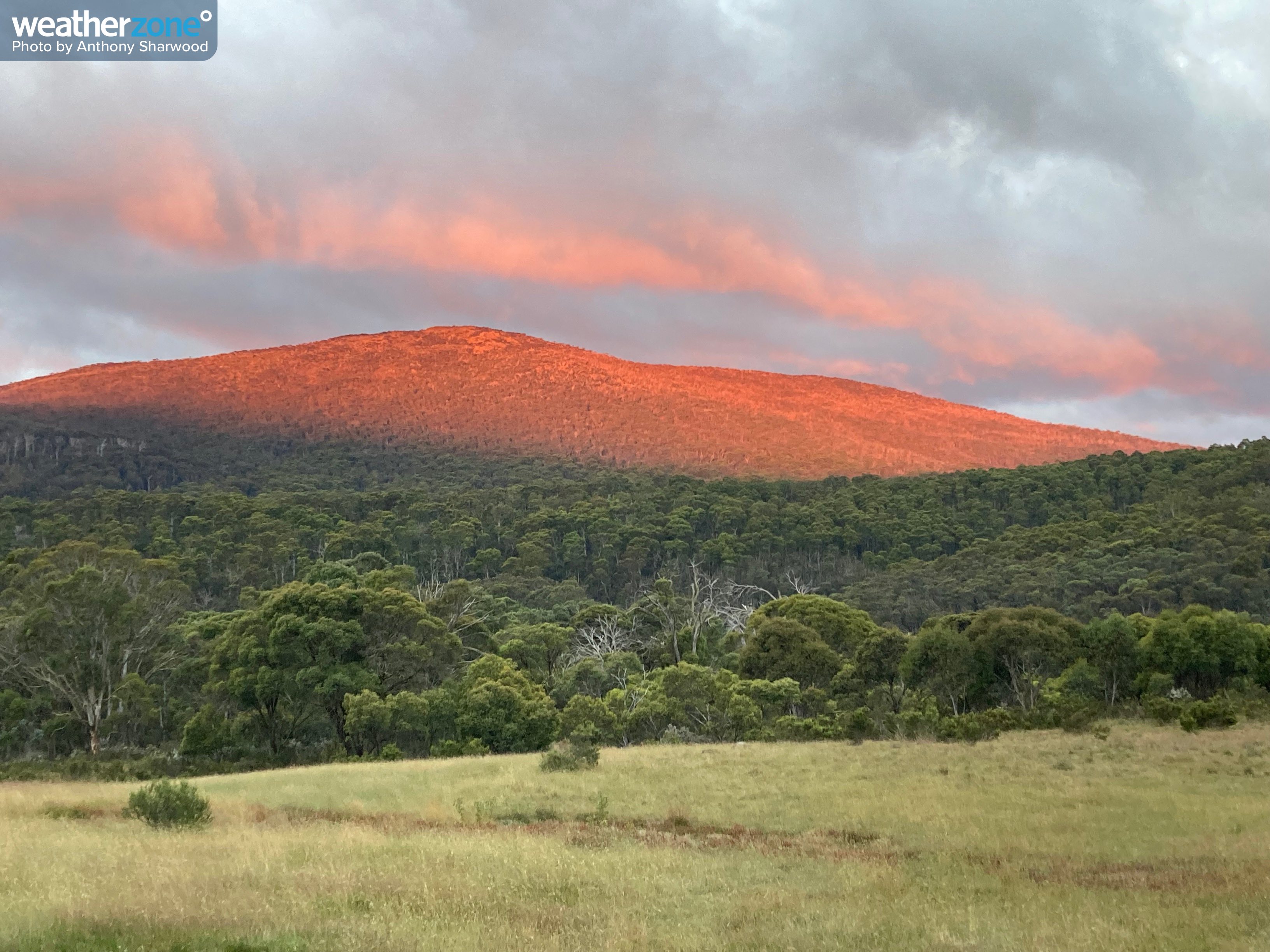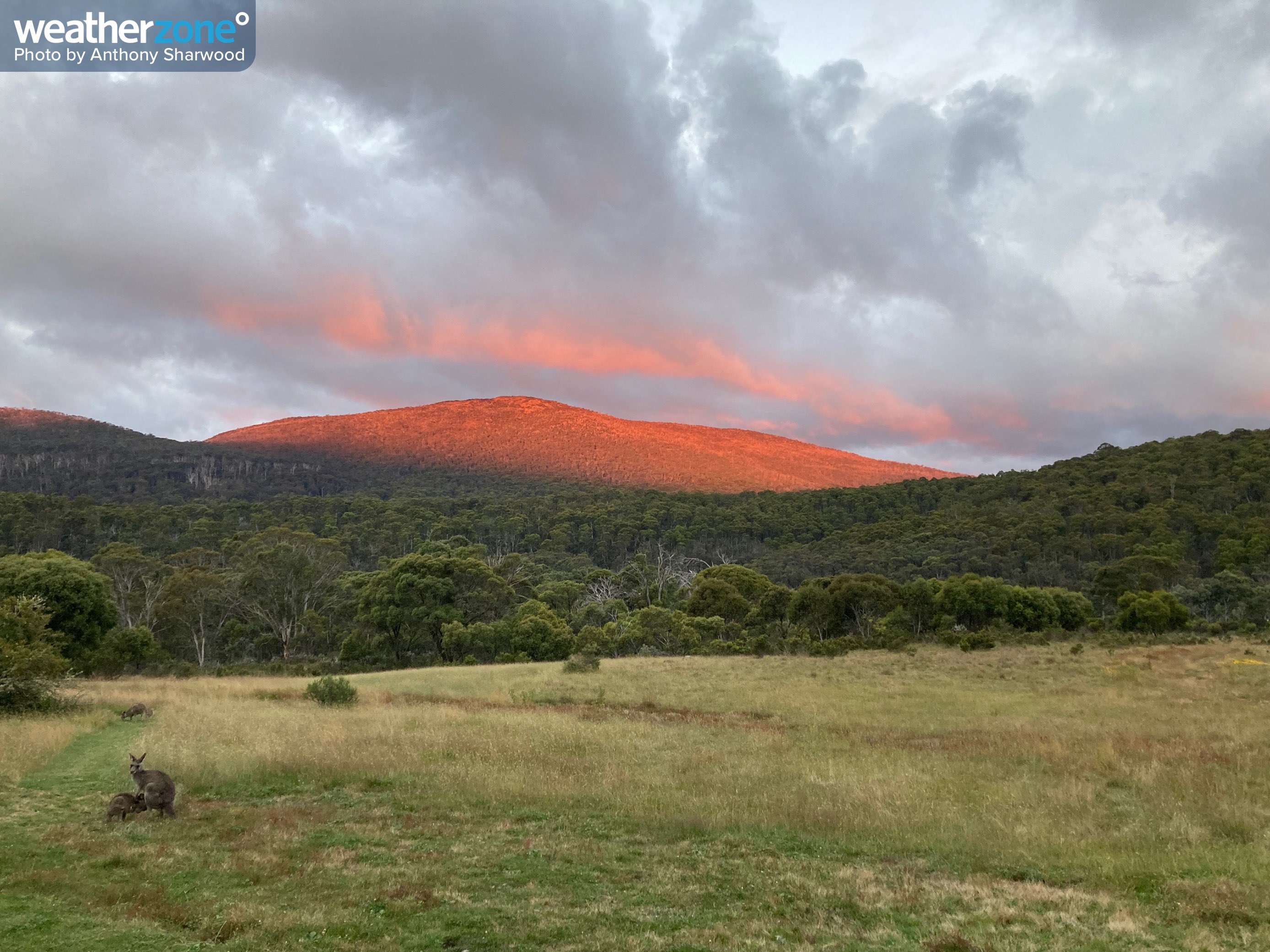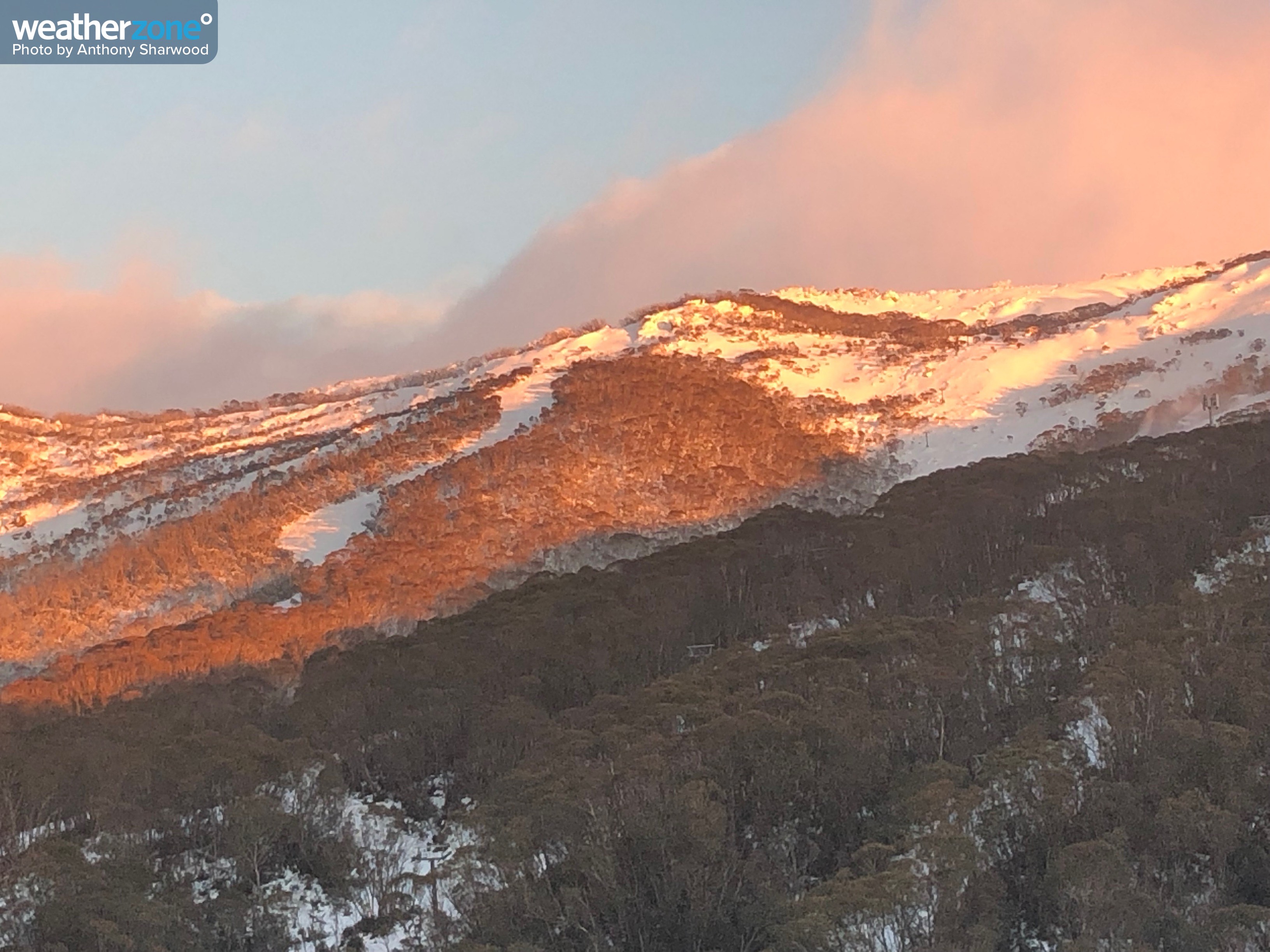Why the Snowy Mountains turned red like Uluru last weekend
The kangaroos didn't look so interested, but your humble Weatherzone reporter was absolutely entranced by this sunset on a camping trip in the north of Kosciuszko National Park last weekend.
The glowing mountain in this image is Mt Bimberi (1913m), the highest mountain in the ACT which actually straddles the NSW/ACT border and is just 309 metres lower than Australia's highest peak, Mt Kosciuszko.
Scroll down. It gets even redder...

Why the spectacular colours?
Well it was sunset obviously, but there's a little more to it than that.
At sunrise and sunset, the sun is low in the sky near the horizon. That means the sunlight travels through more of the atmosphere than when the sun is directly overhead.
Because blue light gets scattered more quickly by the atmosphere, it is deflected away before we see it when the sun is low (and travels through more of the atmosphere).
That leaves more of the red wave length. And when that light strikes a mountain with a rocky or grassy summit (the snow gums tend to thin out on the top third of Mt Bimberi), the mountain itself turns orange and red.

There's even a special word for this kind of light over mountains
There's a phenomenon called "alpenglow", from the German "Alpenglühen" – because Germans really do have a word for everything.
It actually refers to two distinct types of phenomena:
- Reddish or pinkish light that strikes high mountains from direct sunlight when the sun is low, as described above.
- Reddish or pinkish light that illuminates mountains when the sun is all the way below the horizon.
In the second case, it's not direct sunlight from the low sun generating the glow. It's actually a reflection of the sun's light off cloud occurring just before sunrise or just after sunset. But that's not what happened with the images in this story.
In the case of the beautiful red sunset on Mt Bimberi, direct sunlight was the culprit – not sunlight reflected off clouds, even though the sky was partly cloudy.
The clue?
It's the dark line which you can clearly see about two thirds of the way up the mountain.

That dark line is the shadow of the ridge on the slightly lower mountain range opposite the mountain, behind where the pic was taken.
(For the record, that lower range is called the Goobarragandra Range. Try saying that five times in a row when you've had a few drinks, or even when you haven't!)
By the way, you get quite a lot of alpenglow in Australia's High Country in winter, and it always looks better when the snow turns pink. Yes, your humble reporter has snapped pics of that too. This one was at Thredbo in July 2019.

Anyway, we hope you enjoyed this magnificent Aussie sunset scene more than the nonchalant kangaroos did!
And don't forget, if you ever have spectacular pics of weather which you'd like us to feature on our app and website with attribution to you, just share them on social media with the hashtag #weatherzone and we'll take that as your seal of approval for us to use. Feel free to tell us a bit about your images too.